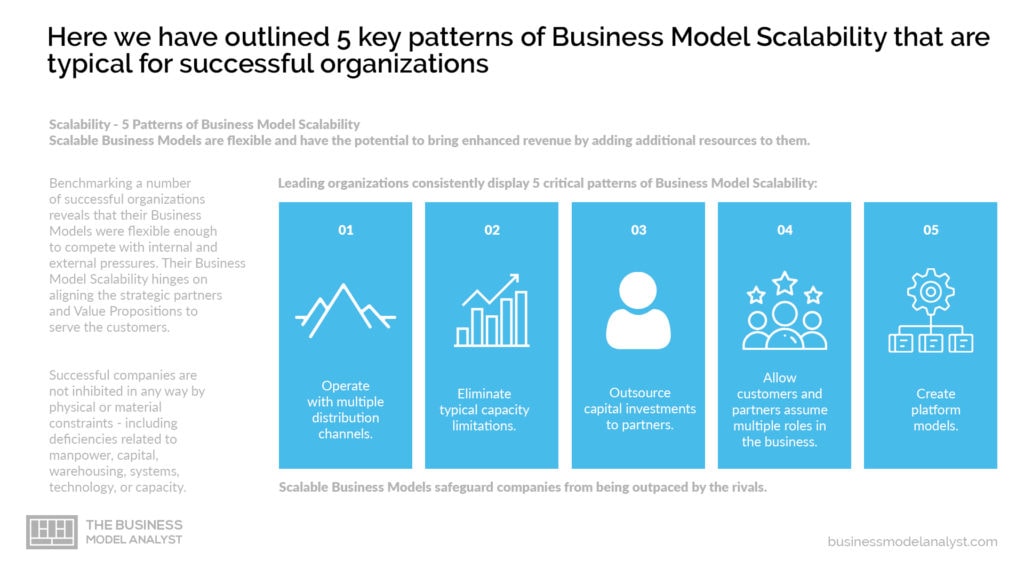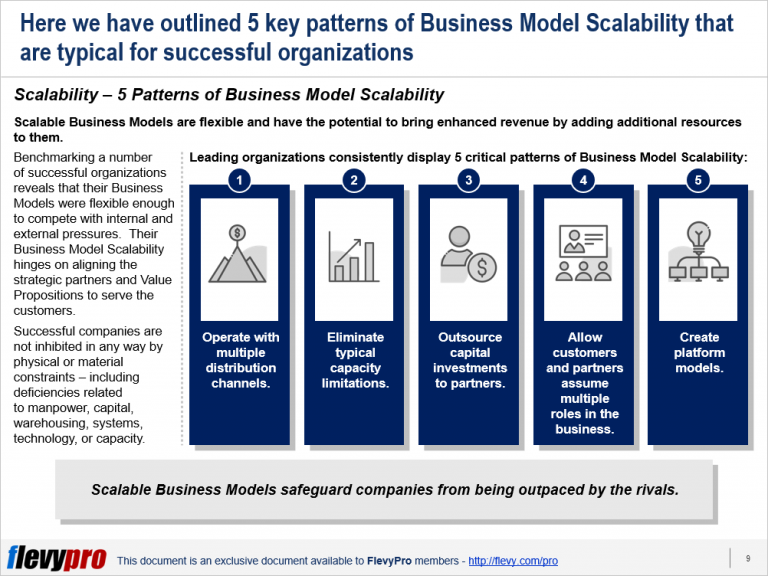How to Create a Scalable Business Model in Asia: A Comprehensive Guide

Embark on a journey to discover the secrets of creating a scalable business model in Asia. From understanding key market trends to navigating cultural nuances, this guide will equip you with the knowledge needed to thrive in one of the most dynamic regions for business growth.
As we delve deeper into the strategies and considerations essential for scalability in Asia, you'll uncover valuable insights that can shape the future of your business endeavors.
Factors to Consider

In order to create a scalable business model in Asia, there are several key factors to consider that can significantly impact the success of your venture.
Identify key market trends in Asia
Understanding the current market trends in Asia is crucial for any business looking to scale in the region. By identifying key trends such as the rise of e-commerce, increasing digitalization, and the growing demand for sustainable products, you can tailor your business model to meet the needs of the market effectively.
Discuss the importance of understanding cultural nuances and preferences
Cultural nuances and preferences vary significantly across different Asian markets. It is essential to conduct thorough research and gain insights into the cultural values, communication styles, and consumer behaviors of each target market. Adapting your business model to align with these cultural preferences can help build trust and credibility with your target audience.
Analyze the regulatory environment in various Asian countries
The regulatory environment in Asia can vary greatly from country to country, impacting the scalability of your business. It is crucial to understand the legal requirements, licensing procedures, taxation policies, and any other regulatory frameworks that may affect your operations.
Compliance with local laws and regulations is key to avoiding any potential setbacks or legal issues while scaling your business.
Explore potential challenges unique to scaling a business in Asia
Scaling a business in Asia comes with its own set of unique challenges compared to other regions. Factors such as language barriers, diverse consumer preferences, intense competition, and complex supply chains can pose significant obstacles to scalability. By addressing these challenges proactively and developing strategic solutions, you can navigate the complexities of the Asian market more effectively.
Market Research and Analysis

Market research plays a crucial role in designing a scalable business model in Asia. It helps businesses understand the needs and preferences of their target customers, identify market trends, and assess competition. By conducting thorough market research, companies can make informed decisions and tailor their business models for sustainable growth.
Examples of Successful Companies in Asia
- Grab: The ride-hailing company Grab started as a taxi-hailing app in Malaysia and expanded its services to other Southeast Asian countries. By leveraging technology and understanding the local market needs, Grab successfully scaled its business model across the region.
- Alibaba: The e-commerce giant Alibaba began as a B2B marketplace in China and evolved into a diversified platform offering various services like e-commerce, cloud computing, and digital payments. Alibaba's focus on innovation and adapting to the changing market landscape contributed to its scalability.
Role of Technology and Innovation
Technology and innovation are key drivers of scalability in Asia. Companies that embrace technological advancements and innovate their products or services can gain a competitive edge in the market. By leveraging technology for efficient operations, reaching a wider customer base, and enhancing customer experience, businesses can create scalable models that adapt to changing market demands.
Market Entry Strategies for Scaling in Asia
- Partnerships: Collaborating with local partners can help businesses navigate regulatory challenges, access local expertise, and establish a presence in new markets more effectively.
- Acquisitions: Acquiring existing businesses in the target market can accelerate growth and provide access to established customer bases and distribution networks.
- Organic Growth: Gradual expansion through direct investment and building a brand presence in new markets can also be a viable strategy for scaling a business in Asia.
Sustainable Growth Strategies

Developing sustainable growth strategies is crucial for long-term scalability in Asia. It involves creating a solid foundation for business expansion while ensuring that growth is manageable and profitable. Building strong relationships with local partners or stakeholders is essential to support business growth in the region.
These partnerships can provide valuable insights into the local market, help navigate regulatory challenges, and open doors to new opportunities.
Building Strong Relationships with Local Partners
- Establish clear communication channels with local partners to ensure alignment on business goals and strategies.
- Invest time in understanding local customs, culture, and business practices to build trust and credibility.
- Create mutually beneficial partnerships that offer value to both parties, fostering long-term collaboration.
- Regularly engage with local partners to address any issues promptly and strengthen the relationship over time.
Scalability of Revenue Models in Asian Markets
- Diversifying revenue streams can help mitigate risks and adapt to changing market conditions in Asia.
- Subscription-based models and freemium offerings have shown scalability in the region, providing recurring revenue and customer loyalty.
- Localized pricing strategies and flexible payment options can enhance revenue growth in diverse Asian markets.
Leveraging Digital Marketing and E-commerce
- Utilize data analytics and market insights to tailor digital marketing strategies for specific Asian markets, reaching target audiences effectively.
- Optimize e-commerce platforms for mobile devices, as mobile commerce is prevalent in many Asian countries.
- Collaborate with influencers and leverage social media channels to increase brand visibility and drive online sales in Asia.
Operational Efficiency and Flexibility
Operational efficiency plays a crucial role in scaling a business model in Asia, where competition can be fierce and market conditions rapidly changing. By optimizing processes, reducing waste, and streamlining operations, companies can improve their productivity and profitability, enabling them to grow sustainably.
Flexibility and adaptability are equally important, as businesses need to be able to pivot quickly in response to shifting market dynamics, consumer preferences, and regulatory changes. Companies that can quickly adjust their strategies and operations are better positioned to capitalize on emerging opportunities and mitigate risks in the Asian market.
Examples of Operational Efficiency in Action
- Alibaba: The Chinese e-commerce giant has built a highly efficient logistics network, allowing them to deliver products quickly and cost-effectively across China and beyond.
- Tencent: The tech company has diversified its revenue streams by leveraging its existing platforms and user base, maximizing operational efficiency and scalability.
Role of Data Analytics in Enhancing Operational Efficiency
Data analytics and insights are increasingly being used by companies in Asia to optimize their operations. By leveraging data, businesses can identify inefficiencies, predict market trends, and personalize customer experiences. This data-driven approach enables companies to make informed decisions that drive operational efficiency and scalability.
Final Wrap-Up
In conclusion, crafting a scalable business model in Asia requires a blend of strategic foresight, adaptability, and a deep understanding of the diverse markets within the region. By implementing the right growth strategies and operational efficiencies, your journey towards sustainable scalability in Asia begins here.
Key Questions Answered
What are the key factors to consider when creating a scalable business model in Asia?
Identifying key market trends, understanding cultural nuances, analyzing regulatory environments, and addressing unique challenges specific to the region are crucial considerations.
How important is market research in developing a scalable business model in Asia?
Thorough market research is vital as it provides insights into consumer behavior, competitive landscape, and opportunities for growth, shaping the foundation of a successful scalable model.
What role does technology play in creating a scalable business model in Asia?
Technology and innovation are key drivers of scalability, enabling businesses to streamline operations, reach wider audiences, and adapt to changing market dynamics efficiently.
How can digital marketing and e-commerce be leveraged for scaling a business in Asia?
Utilizing digital marketing strategies and e-commerce platforms can help businesses expand their reach, target specific demographics, and drive growth in the competitive Asian market.

